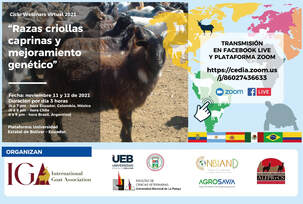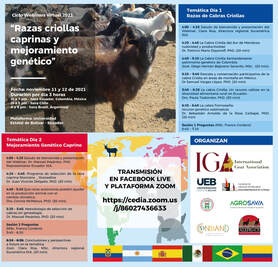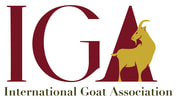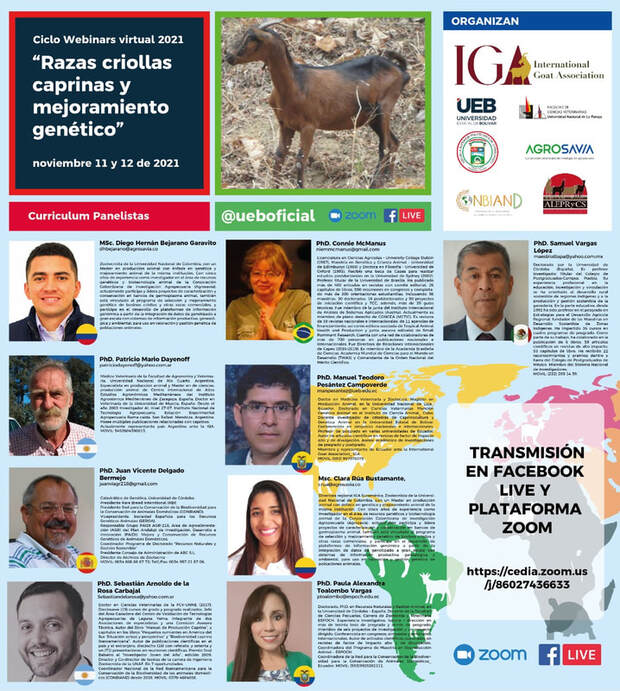|
FAO is recruiting 25 Young Professional Officers (P1) in its headquarters and Decentralized Offices.
The FAO Young Professionals Programme (YPP) is designed to recruit entry-level Professionals and specifically targets qualified, young professionals from non- and underrepresented Members that are not members of the Organisation for Economic Co-operation and Development (OECD) Development Assistance Committee (OECD DAC). Nationals from the countries listed below are particularly encouraged to apply: Angola, Antigua and Barbuda, Bahamas, Central African Republic, China, Cook Islands, Estonia, Fiji, Grenada, Indonesia, Israel, Kiribati, Malaysia, Marshall Islands, Mauritius, Micronesia, Myanmar, Nauru, Niue, Palau, Qatar, Saint Lucia, Sao Tome & Principe, Saudi Arabia, Singapore, Turkey, United Arab Emirates, Vanuatu. We would appreciate if you could kindly circulate this vacancy announcement amongst relevant institutions and partners in your network. The vacancy announcements are available under the YPP tab on the FAO Employment Website. The overview of the programme can be found by clicking on this link. Instructions on how to apply can also be found on the same page. Kindly note that applications close at 11:59 CET on 12 November 2021. Should you have any further queries on the Young Professionals Programme, please do not hesitate to contact [email protected].
0 Comments
Written by Anne Zinn
Cashmere fiber is a main product of cashmere goats that is produced by secondary hair follicles, and, like wool, the cashmere fiber is composed of hair-keratins and keratin-associated proteins. These keratin-associated proteins serve as a matrix that cross-links hair-keratins and are therefore believed to play an important role in defining the physical and mechanical properties of the fiber. Five keratin-associated protein 6 genes (KRTAP6-5) have been identified in sheep and some variations have been associated with wool fiber diameter-related traits, but none of these homologues have been identified in goats. Given the potential effect of KRTAP6 on wool traits, investigation is needed to identify KRTAP6-n in goats and to determine whether variation in KRTAP6s affects cashmere traits. Therefore, a paper recently published in the Journal of Animal Science attempted to identify the caprine KRTAP6-5 to search for potential variation in the gene and to investigate its effect on cashmere fleece traits. Efforts of this research reported the identification of the sheep KRTAP6-5 homologue on goat chromosome 1 and PCR-single strand conformation polymorphism analysis in 300 Longdong cashmere goats revealed the existence of 12 variant sequences. Variation in goat KRTAP6-5 was found to be associated with variation in mean-fiber diameter, suggesting that KRTAP6-5 is worthy of further study in the context of variation in cashmere traits. The full paper can be found on the Journal of Animal Science webpage.  Fecha: noviembre 11 y 12 de 2021 Duración por día 3 horas (4 a 7 pm - hora Ecuador, Colombia, México (5 a 8 pm – hora Chile 6 a 9 pm - hora Brasil, Argentina) Plataforma: Universidad Estatal de Bolívar – Ecuador. Temática Día 1 Razas Criollas de Cabras 4:00 – 4:10 Saludo de bienvenida y presentación del Webinar. Clara Rúa, directora regional Suramérica IGA. 4:10 – 4:40 La Cabra Criolla del Sur de Mendoza: rusticidad y productividad. Dr. Patricio Mario Dayenoff, PhD. (20 min) 4:40 – 5:10 La Cabra Criolla Santandereana: patrimonio genético de Colombia Zoot. Diego Hernán Bejarano Garavito, MSc. (20 min). 5:10 – 5:40 Rescate y conservación participativa de la cabra Criolla en áreas de montaña en México. Dr Samuel Vargas López, PhD. (20 min).  Temática Día 2 Mejoramiento Genético Caprino 4:00 – 4:10 Saludo de bienvenida y presentación del Webinar. Dr. Manuel Pesántez, PhD. Representante Ecuador IGA. 4:10 – 4:40. Programa de selección de la raza caprina Murciano _ Granadina Dr. Juan Vicente Delgado, PhD. (20 min). 4:40 – 5:10 Qué razas autóctonas pueden ayudar en la producción animal con el cambio climático. Dra. Connie McManus, PhD. (20 min). 5:10 – 5:40. Metodología de selección de cabras sin genealogía. Dr. Manuel Pesántez, PhD. (20 min). Submission Deadline: 31 January 2022
About this Research Topic The significance and importance of small ruminants and their breeding for humankind are diverse and cannot be overestimated. Since domestication, sheep and goats have been a source of valuable food products (milk, meat) and warm wool/leather clothes and shoes that protect from cold weather. They also served as sacred animals in early religious rituals and celebrations and accompanied nomads and traders in their long migrations and travels. Sheep wool contributed to building empires and advancing industrial revolutions. In the past and at present, small ruminant products provide many people living in extreme poverty with essential nutrients, supplying them with everyday necessities and ensuring a traditional lifestyle (e.g., pastoralism) for many ethnic groups. Implementation of high-throughput arrays and next generation sequencing approaches has unlocked an era of genomic investigation in small ruminants, addressing various research aims, from deepening knowledge on the origin and genetic connections of worldwide sheep and goat breeds to understanding the mechanisms underlying the formation of economically important traits and tremendous natural resilience of small ruminants. Updated Goat Dewormer Chart from the American Consortium for Small Ruminant Parasite Control10/15/2021 Drug resistance to multiple drugs and sometimes to all available drugs in parasites of goats is extremely common. In order to deliver effective treatments to their animals, it is recommended that producers learn which dewormers still work on their farms by doing fecal egg count reduction tests (FECRT, comparing before and after fecal egg counts) or having a DrenchRite® larval development assay (LDA) done. Several land grant universities now offer low cost ($5/sample) fecal egg counting for this purpose. For more information, go to https://www.wormx.info/lowcostfec . For information about the cost and availability of the DrenchRite test, send an email to [email protected] .
To improve the effectiveness of deworming treatments, it is now recommended that goats be given combination treatments. A combination treatment is when you give drugs from different classes to the same animal at the same time. It is important not to mix the different drugs together as they are not chemically compatible.They should be given separately, but can all be given at the same time, one right after the other. It is always recommended to treat goats selectively given their individual need for treatment based on FAMACHA© score and/or the Five Point Check©. Sometimes performance (ADG, milk production, litter size) is used as a criterion for deworming. This recommendation is even more important when using drugs in combination. If all animals in the herd are treated, resistance to the dewormers will develop rapidly, and if using a combination, there will be nothing left to use when this happens. Go to wormx.info for more information on drug choice and drug resistance. This chart was originally developed by Ray M. Kaplan, DVM, PhD, DACVM, DEVPC (University of Georgia) with subsequent contributions by Patty Scharko DVM, MPH (Clemson University). It was last updated October 2021 by Michael Pesato DVM DABVP (Mississippi State University). Goats of the World and World of Goats – Emerging from the Shadow of COVID-19 The IGA virtual conference is almost here! If you are an IGA member, then registration is FREE. Registration is €25 for non-IGA members. Currently, an IGA membership is $55 (about €47). Save €25 (about $29) and join IGA today. The conference will take place on November 16, 2021 from 2 pm to 6 pm European Time (Paris time).
Goat breeding, as part of the livestock sector is a key contributor to food security, nutrition and livelihoods, especially for the world’s most vulnerable populations. Since the global outbreak of COVID-19 in 2020, the world’s goat production and the life of the farmers have been severely affected. The aim of the conference is to investigate the negative impacts (current and potential) of the pandemic e.g. reduced access to animal feeds, inputs and services; reduced processing capacities; compromised storage and conservation options; difficulties in inland and international transportation; animal health problems because of reduced testing and diagnostic capacity; lack of animal disease control programmes. Reports will be delivered on national and regional levels (by Country Representatives and Regional Directors of IGA), hoping to get a global overview by the end of the conference. The organisers would be more than happy to see some actions, how to mitigate the impact of COVID-19 on the goat sector.
Written by Mwihaki Mundia
Livestock farming is an important source of income in rural households in African countries. Goats, which were one of the first animals to be domesticated in the continent, are especially important in the Democratic Republic of Congo (DRC) where they are kept by 75% of the rural population and provide up to 72% of the household income through the sale of meat, milk and live animals. More than 4 million indigenous goats are kept by farmers in the DRC. These animals mainly fall under three local breeds locally known as ‘chèvre moyenne du Congo’ or the small goat of Congo; ‘chèvre du Kasai’ or Kasai goat and the ‘chèvre de Bandundu’ or dwarf goat of Congo; which are spread across all three agro-ecological zones of the country. As in eastern Africa, goats in the DRC are raised in marginal areas where crop production is low. Congolese Patrick Baenyi, a former Africa Biosciences Challenge Fund (ABCF) fellow at the Biosciences eastern and central Africa-International Livestock Research Institute (BecA-ILRI) Hub aims to improve the livelihoods of rural households in his country by conserving and improving indigenous goats through a better understanding of their genetic diversity and population composition. A report to the Small Ruminant Production Enhancement Project (SRPEP) by the International Livestock Research Institute in support of The Gambia’s livestock master plan
Karl M. Rich, Sirak Bahta, Abdrahmane Wane, Francis Wanyoike and Isabelle Baltenweck Study context The Gambia is the smallest country in West Africa, spanning just 11,300 square kilometres, with a high population density (176 people per square kilometre). It shares a single 749-kilometre overland border with Senegal. About 57% of its population is reported to live in urban areas. The total population in The Gambia is expected to gradually rise in the next three decades to approximately 4.3 million people, requiring anticipative policies concerning both infrastructure development and food supply improvement (Nyoni et al. 2019). The Gambia’s economy relies heavily on the tourism and agriculture sectors. The gross domestic product (GDP) grew by 6% in 2019 against a 6.5% growth in 2018, predominantly with an increase of 10% of services supported by wholesale and retail trade while the agriculture sector contracted by 10% (World Bank 2020). The agriculture sector remains too dependent on weather conditions, predominantly traditional and is characterized by low input extensive system of husbandry. Moreover, the Gambian agricultural sector struggles to overcome its key long-term development challenges related to the country’s undiversified economy, small internal market, limited access to resources, lack of skills necessary to build effective institutions, high population growth, lack of private-sector job creation and high rate of outmigration. More specifically, the agricultural sector suffers from a structural inability to produce more and better, respond to increasing demand for livestock products and sustain a better life from livestock. Agricultural productivity in The Gambia remains quite low and, in turn, has significant adverse implications for the economy. |
IGA Blog
The International Goat Association promotes goat research and development for the benefit of humankind, to alleviate poverty, to promote prosperity and to improve the quality of life. Archives
May 2024
Categories
All
|
|
International Goat Association
2516 Millbrook Rd., Little Rock, AR72227 USA email: [email protected] -454-1641 |



 RSS Feed
RSS Feed